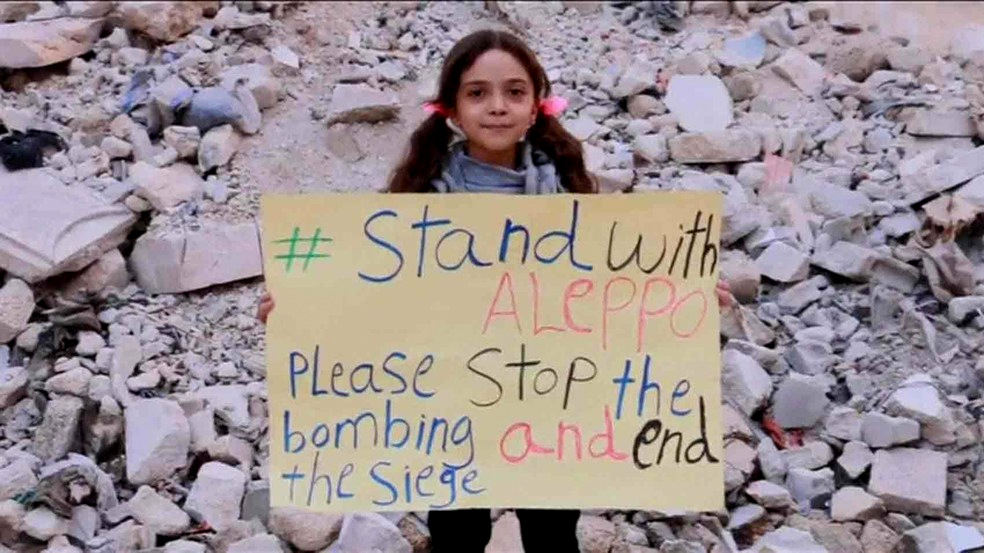The Syrian military is helping hundreds of thousands of civilians evacuate areas in eastern Aleppo which are currently controlled by rebel and extremist groups.
While millions of Syrians have suffered since the current civil war evolved from the Arab Spring protests of 2011, it’s become all but impossible to separate real news from pro-war propaganda paid for by the United States and its allies. As dubious claims of genocide, often based on fake photos, flood social media and mainstream media alike, people are faced with the complex task of separating real reporting from U.S.-government backed “fake news.”
Efforts to lure the West into a supposedly “humanitarian” military intervention with Syria have been almost continuous throughout President Barack Obama’s eight years in office. WikiLeaks’ archive of U.S. diplomatic cables reveals that the United States, Israel and Saudi Arabia have been planning to overthrow Syrian leader Bashar Assad since at least 2006. Although the Obama administration never openly declared war on Syria, the United States has repeatedly offered training and materiel to so-called “moderate” rebels, even though these groups have repeatedly been linked to war crimes and atrocities and have ties to terrorist groups like al-Qaida.
In all, the State Department has spent hundreds of millions of dollars arming and training terrorists, even after some officials admitted that these “moderate” rebels were anything but moderate.
Currently, the besieged region of eastern Aleppo is controlled by two major extremist groups, Jabhat al Nusra, a group with ties to al-Qaida also known as the Nusra Front, and Jaysh al Sham, another terrorist group receiving U.S. backing despite being designated a terrorist organization. As a result, almost no information escapes the city without their approval and involvement. With the stranglehold limiting the reporting coming from the rebel-held areas, some of the most popular journalists and activists sharing “news” from Aleppo are actually working with the backing of the rebels and, in many cases, the direct support of Western governments.
Here are five of the most well-known Syrian “experts” and social media figures:
Bana Alabed
Since joining Twitter in September, Bana Alabed has amassed 359,000 followers. Social media users rejoiced when the 7-year-old girl, who has reportedly been tweeting from eastern Aleppo, escaped in the recent evacuation along with thousands of other civilian residents of the war-torn city.
Remember Bana, the 7-year-old girl tweeting from Aleppo? She and her mom have been safely evacuated. #WhereIsBana pic.twitter.com/sXltFvjSXh
— AJ+ (@ajplus) December 19, 2016
On closer examination, though, it seems that the image of Bana — an innocent young girl living under war in Syria — is being used to promote the aims of the U.S. government.
Numerous analysts have cast doubt on Bana’s account. As observed by U.S. Dept. of Fear, a satirical Twitter account, even U.S.-backed human rights experts have questioned the authenticity of Bana’s Twitter account and the veracity of her experiences.
https://twitter.com/FearDept/status/809577396974166016
“Her messages are sophisticated for a 7-year-old, for example, particularly for one
whose native language is not English,” The New York Times admitted on Dec. 7. Reporters Rick Gladstone, Megan Specia, and Sydney Ember further noted the skepticism of some humanitarian aid workers:
“International aid advocates have expressed mixed feelings about Bana’s fame —
satisfaction that she has increased global sympathy for child victims in Syria, but concern that her story, as presented on Twitter, may not be entirely accurate.”
While Bana appears to be a genuine 7-year-old girl who has likely suffered from the civil war, there’s ample evidence that her story has been twisted to help build support for war.
Barbara McKenzie highlighted numerous other inconsistencies in the so-called “Bana Project” in a report for 21st Century Wire on Nov. 29. McKenzie’s analysis suggests that many of Bana’s initial Twitter followers were fake, and her apparently immediate mastery of the nuances of Twitter, such as the use of hashtags, reveals that social media experts have likely advised her on how to best reach Western audiences.
#syria Bana al-Abed is filmed by her mother as they prepare to post on Twitter about life in #Aleppo on October 12 #AFP by @THAER__MOHAMEED pic.twitter.com/85oTf5MEtS
— AFP Photo (@AFPphoto) December 6, 2016
Despite some skepticism from social media users, McKenzie wrote, “The corporate media … have without exception taken Bana to their hearts, with poignant articles free of all doubt appearing in the Telegraph, the Guardian, and on all the main television channels.”
She concluded:
“There can be no doubt that the Bana Project is a scam, that the tweets are written to promote the NATO narrative of the Syrian War, with regard to the participation of Syrian and Russian forces, in order to facilitate regime change in Syria.”
While Bana’s tweets and videos tug at heartstrings around the world, they’re also building support for a war that would, in all likelihood, only increase the suffering of Syrian civilians.
Bilal Abdul Kareem
Bilal Abdul Kareem claims to be an independent journalist reporting from the ground in eastern Aleppo. Little is known about his origins, but he’s been granted unusually open access to areas held by Syrian rebels unavailable to most other reporters.
On Dec. 12, Kareem published a desperate message which claimed that increasingly violent attacks by the Syrian government threatened his ability to report and put his life at risk.
“Kareem, who is an American citizen by birth, presents himself as an ‘independent journalist,’ but his ‘independence’ only goes as far as parroting the ‘moderate opposition’s’ totally unverified claims that retributive atrocities are taking place all over the city,” wrote Andrew Korybko, a columnist for Sputnik News, a Russian state-owned media outlet.
According to Korybko’s Dec. 14 analysis of Kareem’s reporting, his intimate access to Syrian rebel-held areas suggests Kareem collaborates directly with rebel groups of necessity.
.
Despite Kareem’s dire-sounding “final” message earlier this month, he’s continued to post updates on social media during the civilian evacuation. A video published Tuesday on his Facebook page, showing rebel fights preparing to become suicide bombers, makes it clear that he’s most likely embedded with the Nusra Front, a terrorist group which recently underwent a “rebranding” in an apparent attempt to distance itself from al-Qaida and ingratiate itself with Washington.
.
The Nusra Front is the same group implicated in burning the buses that were intended to be used to evacuate civilians from Aleppo, and they have allegedly withheld food aid from the region’s starving residents.
Lina Shamy
Another “independent” voice that’s actually tied to rebel and terrorist groups is that of Syrian activist Lina Shamy.
Shamy, who frequently appears in the Western media to share a pro-intervention perspective, posted a tearful “final message” via Twitter on Monday. And, like Bilal Abdul Kareem, she’s also continued to tweet since then.
To everyone who can hear me!#SaveAleppo#SaveHumanity pic.twitter.com/cbExEMKqEY
— Lina shamy (@Linashamy) December 12, 2016
“Shamy appears to be alive and well despite her previous claims of facing impending doom,” observed Will TG Miller, a reporter for Varsity, a student newspaper published by Cambridge University. In a report published Tuesday, Miller shared evidence that Shamy has shown support for extremist groups in the past:
“One year ago, she updated her cover photo on Facebook in adulation of the recently deceased Zahran Alloush, leader of the Jaysh al-Islam terrorist group. Alloush had publicly called for the genocide of Alawites, and his group has caused extensive civilian casualties.”
“One questions why mainstream media outlets like the BBC are relying on characters like Shamy for reporting on the situation in Aleppo, given her apparent support for genocidal terrorists,” Miller asked.
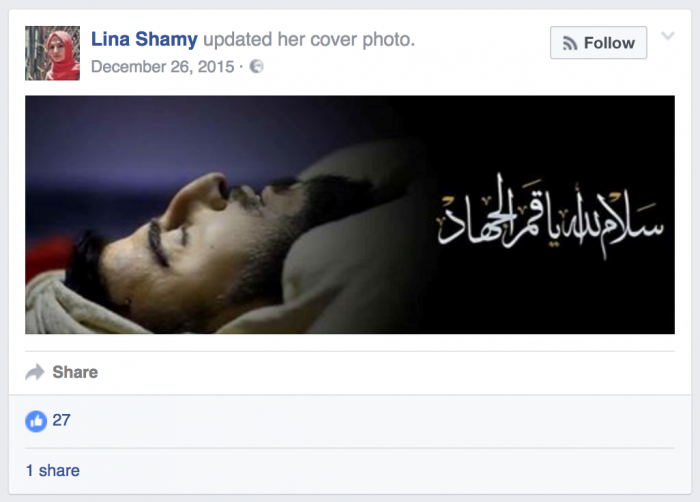
MintPress News’ publisher and editor-in-chief Mnar Muhawesh also noted that Shamy’s Facebook page shows her support for the Free Syrian Army, an armed opposition group funded, trained, and armed by the CIA and other Western intelligence agencies as well as the West’s allies in the Middle East.
“It’s people like Lina Shamy who are purposely or unknowingly spreading misinformation about the crisis in Syria to ignite international support for a no-fly zone or an all out invasion of Syria that supports regime change,” Muhawesh wrote in a Dec. 13 Facebook update.
Rami Abdul Rahman and the Syrian Observatory For Human Rights
Despite its official-sounding name, the Syrian Observatory For Human Rights is actually based out of a home in the United Kingdom and operated by one man, Rami Abdul Rahman. Rahman’s reports, which he claims to receive by phone from Syria, invariably incriminate the Syrian government while ignoring the crimes committed by the Western- and Saudi-backed opposition.
When Reuters profiled the Observatory in 2011, Rahman told the wire service that his organization ran on a purely volunteer basis.

But two years later, in a profile published by The New York Times, Rahman admitted that he is funded by an undisclosed European country. There’s ample reason to believe he actually works directly for the United Kingdom, as Tony Cartalucci pointed out on the foreign policy blog Land Destroyer Report in April 2013:
“While Abdul Rahman refuses to identify that ‘European country,’ it is beyond doubt that it is the United Kingdom itself – as Abdul Rahman has direct access to the Foreign Secretary William Hague, who he has been documented meeting in person on multiple occasions at the Foreign and Commonwealth Office in London.”
So why is Rahman still quoted by almost every mainstream media outlet and many independent ones? In a June 2012 analysis for Land Destroyer Report, Cartalucci wrote that Rahman’s questionable sources and funding make him a propagandist, not a human rights observer. Because Rahman’s message supports demands for Western military intervention, Cartalucci added:
“That is why despite the overt conflict of interests, the lack of credibility, the obvious disadvantage of being nearly 3,000 miles away from the alleged subject of his ‘observations,’ or the fact that a single man is ludicrously calling himself a ‘Syrian Observatory for Human Rights’ in the first place, the Western media still eagerly laps up his constant torrent of disinformation.”
The White Helmets
Although the White Helmets, or the Syrian Civil Defense, are probably the most well-known relief organization in Syria — famous even before they became the subject of a Netflix documentary — in reality they are yet another “humanitarian” voice with Western funding and a pro-war, pro-regime change agenda, despite claiming to be independent and impartial from government funding.
Reports have repeatedly linked the White Helmets to the so-called “moderate” Syrian rebels and their terrorist allies. They’ve been photographed with Nusra Front fighters on multiple occasions, suggesting that this “civil defense” team is actually embedding with terrorists.
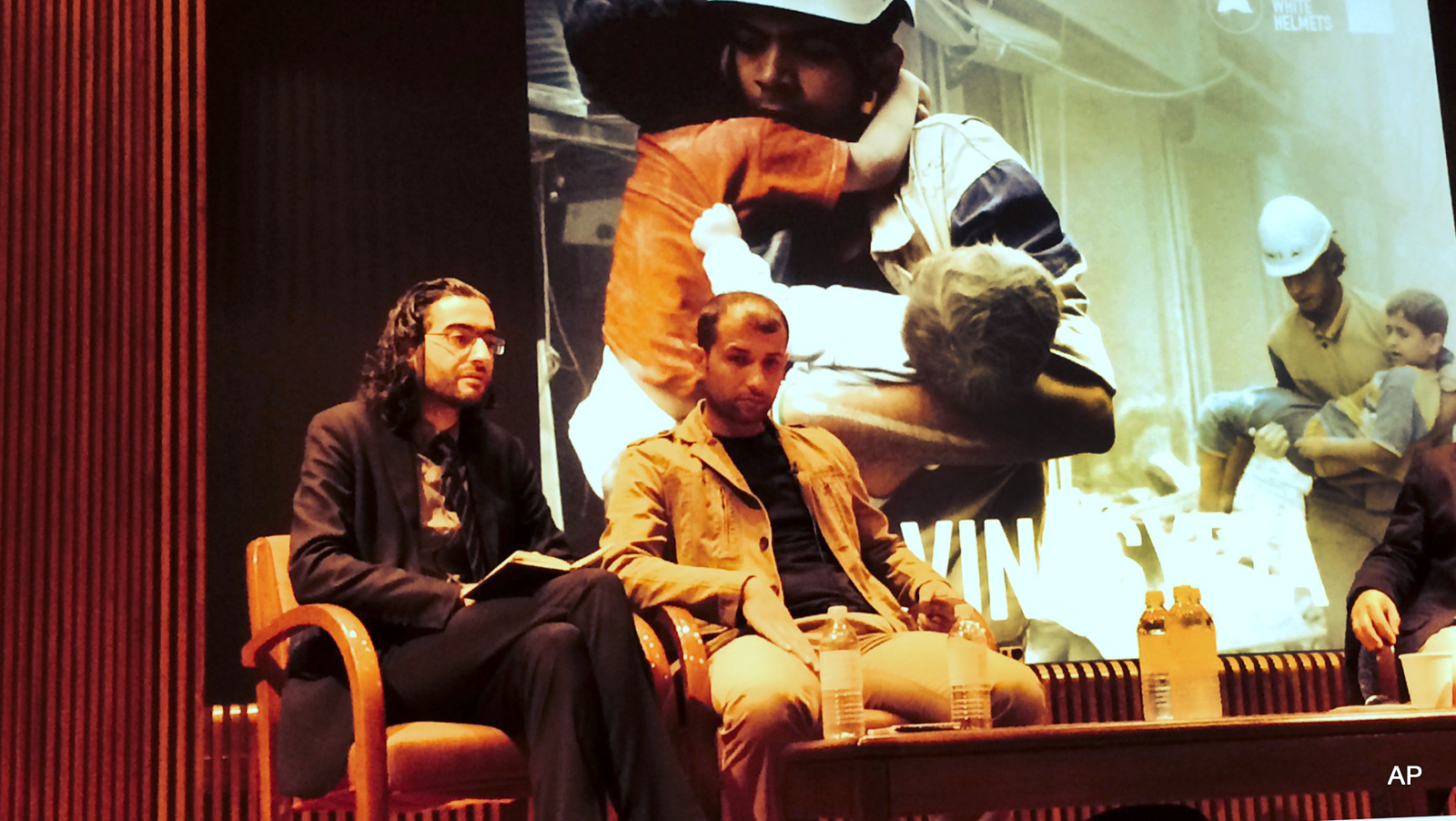
In October, Max Blumenthal, a senior editor at Alternet, revealed that the White Helmets are backed by a mysterious PR firm known as the Syria Campaign. This agency has consistently lobbied for increased U.S. and Western intervention in the region, including demands for a no-fly zone which would require 70,000 troops to maintain and could provoke war with Russia.
While the Syria Campaign openly calls for regime change, the White Helmets claim to be impartial and open to rescuing any victim of the civil war. However, many analysts have pointed out that their claims to have rescued 65,000 victims seem to be wildly exaggerated. And far from being impartial, the group has extensive Western backing, as Blumenthal revealed:
“Indeed, the group was founded in collaboration with the United States Agency for International Development (USAID)’s Office of Transitional Initiatives, an explicitly political wing of the agency that has funded efforts at political subversion in Cuba and Venezuela. USAID is the White Helmets’ principal funder, committing at least $23 million to the group since 2013. This money was part of $339.6 million budgeted by USAID for ‘supporting activities that pursue a peaceful transition to a democratic and stable Syria’ — or establishing a parallel governing structure that could fill the power vacuum once Bashar Al-Assad was removed.”
At a State Department briefing on April 27, 2016, Deputy State Department Spokesman Mark Toner admitted that the group receives funding from U.S. sources. Toner also admitted that the U.S. government revoked the visa of Raed Saleh, the leader of the White Helmets, because of his ties to the Nusra Front. Although he refused to comment on the specific allegations against Saleh, Toner conceded under intense questioning that the government revoked Saleh’s visa because he might pose a threat to the U.S. government. Toner said:
“I’m broadening my language here for specific reasons, but any individual in any group suspected of ties or relations with extremist groups or that we had believed to be a security threat to the United States, we would act accordingly.”
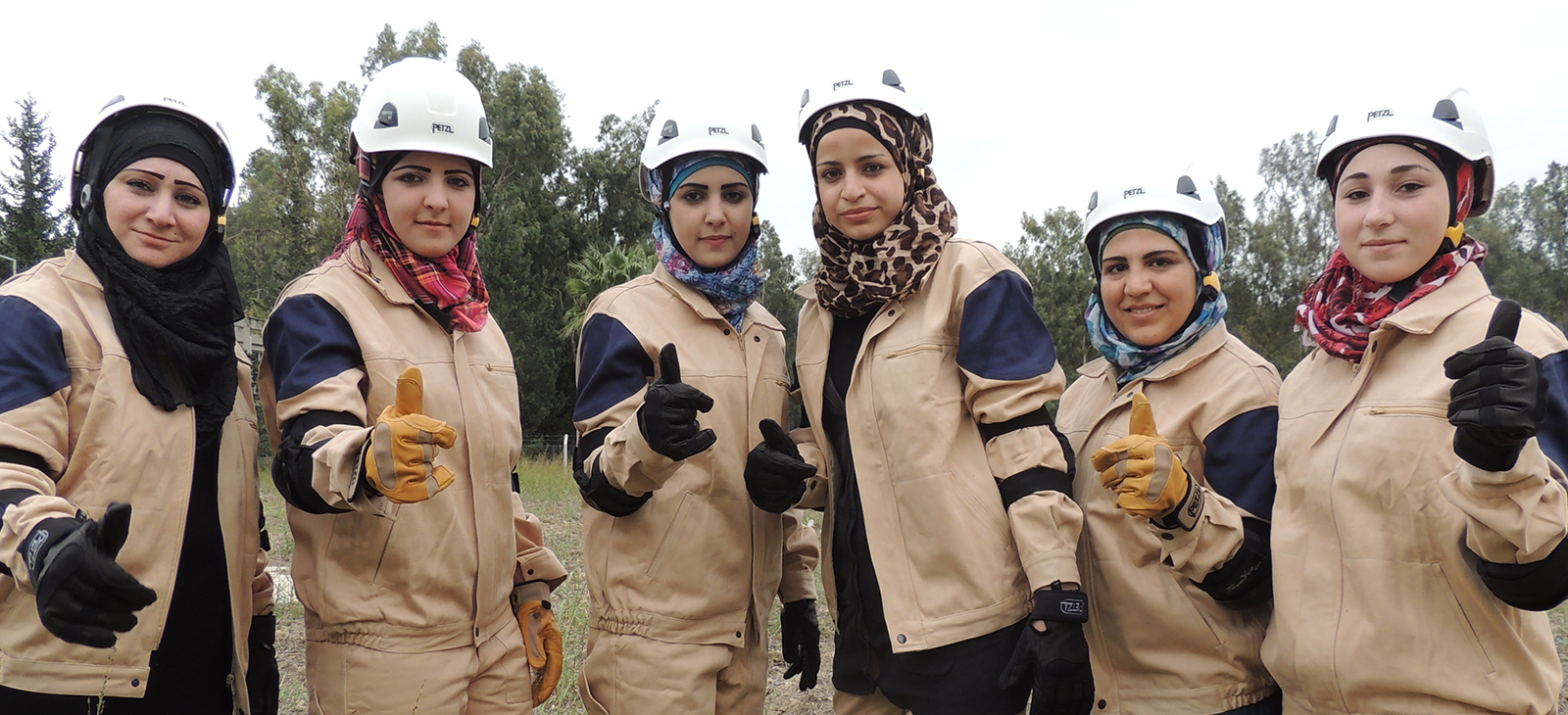
The group also has a propensity for chasing social media fame as much as it pursues its humanitarian aims, producing “cat videos” and even a staged video of a White Helmets rescue meant to evoke the popular “mannequin challenge” in which participants are filmed frozen in place.
On Dec. 8, Rania Khalek reported for Alternet that the questionable “mannequin challenge” video, which was quickly removed from social media, also revealed the White Helmets’ ties to the Revolutionary Forces of Syria media office, a U.K.-backed opposition group that once offered to pay journalists $17,000 per month to create pro-war propaganda.
The mainstream media continues to use footage of the White Helmets’ rescues and interview its members, despite the many questions raised about the group’s actual role in the conflict. As Blumenthal noted in his Oct. 2. review of the Netflix “White Helmets” documentary, only a few voices within the independent media have been willing to question the rescue organization’s activities, and these outlets have been widely attacked and accused of supporting the Syrian government.
“Thus the issue has been kept off the table, along with the public debate over the consequences of a regime change policy that the Obama administration still supports,” Blumenthal concluded.
Time may be running out for the regime change agenda
Stories of genocide in Aleppo, many of which are based on fake or recycled photos, have proliferated in recent weeks, even as the voices of pro-war propagandists like Lina Shamy and Bilal Abdul Kareem have seemed to grow more desperate than ever in the media.
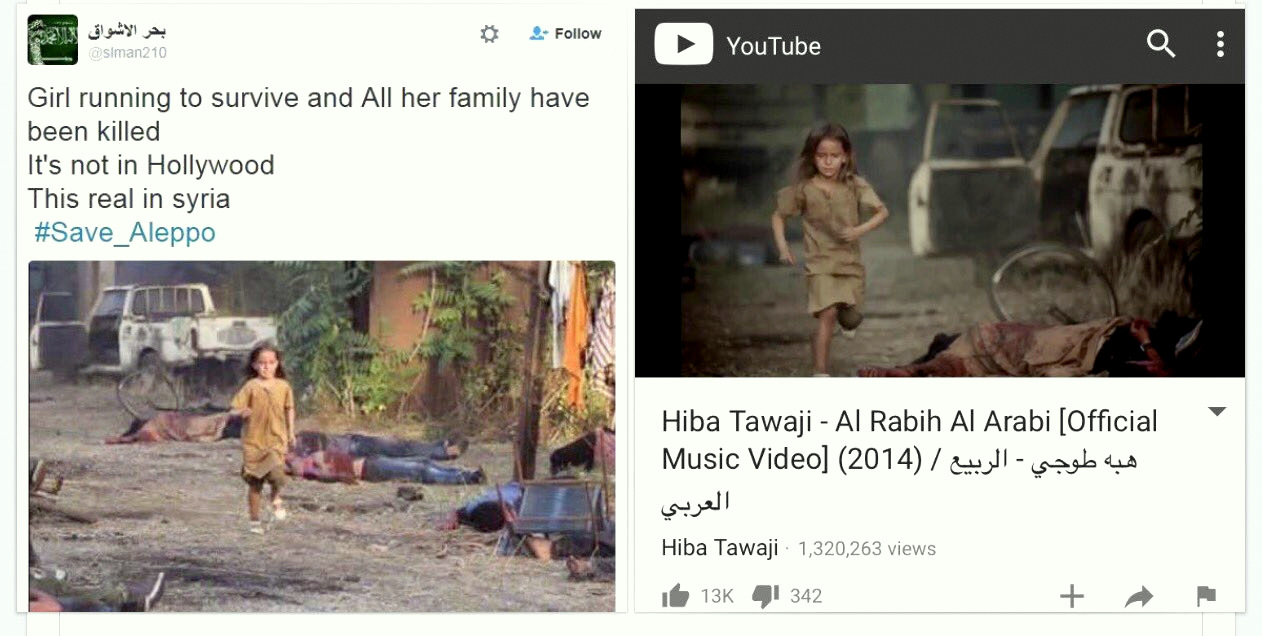
At the same time, truly independent voices in Syria have become more rare than ever. On Saturday, Robert Fisk reported that rebel groups have been excluding independent journalists from East Aleppo, and have threatened or even murdered those who fail to comply.
As a result, the renowned foreign correspondent noted in the U.K.’s Independent, the only “reporters” remaining must, as a consequence, work for these extremist groups. “The foreign media has allowed – through naivety or self-interest – people who could only operate with the permission of al-Qaeda-type groups such as Jabhat al-Nusra and Ahrar al-Sham to dominate the news agenda,” he wrote.
With President Barack Obama’s term drawing to a close, President-elect Donald Trump has shown signs that he may seek to normalize relations with Syria and its allies in Russia. Since this may be the last opportunity to embroil the United States in a lengthy and destructive (but potentially profitable for the military-industrial complex) conflict, we can expect the voices calling for a so-called “humanitarian” war to grow even louder in the days to come.


